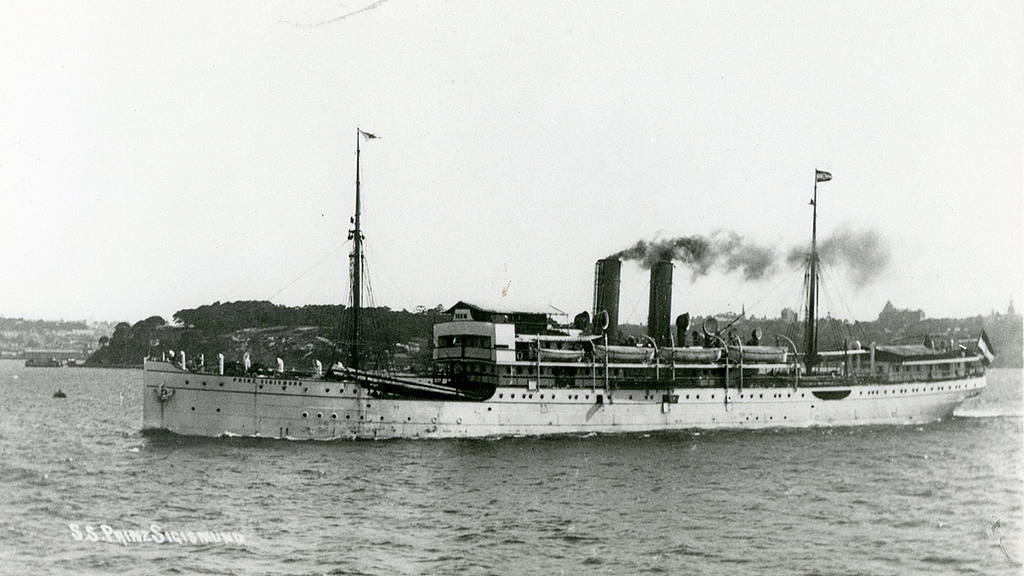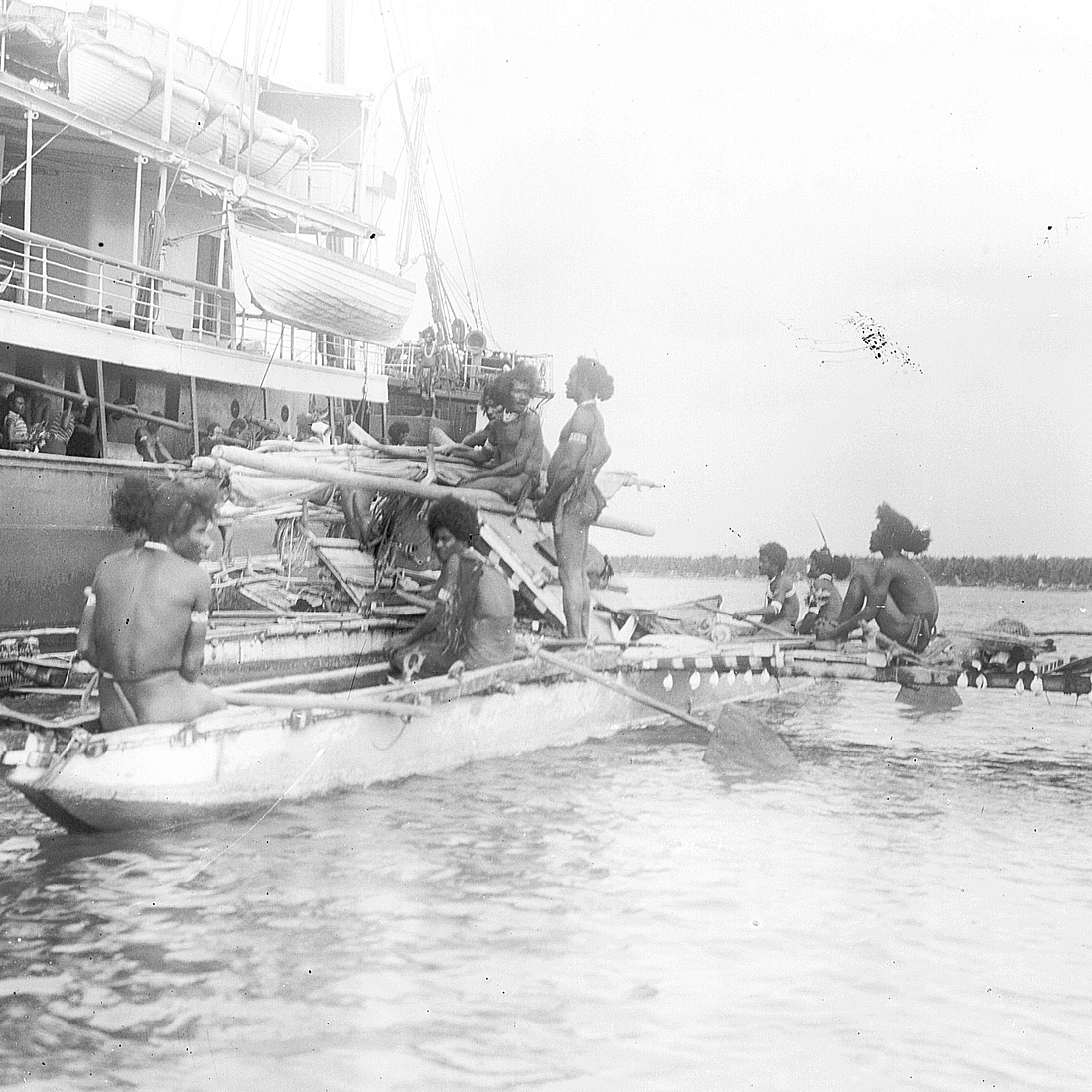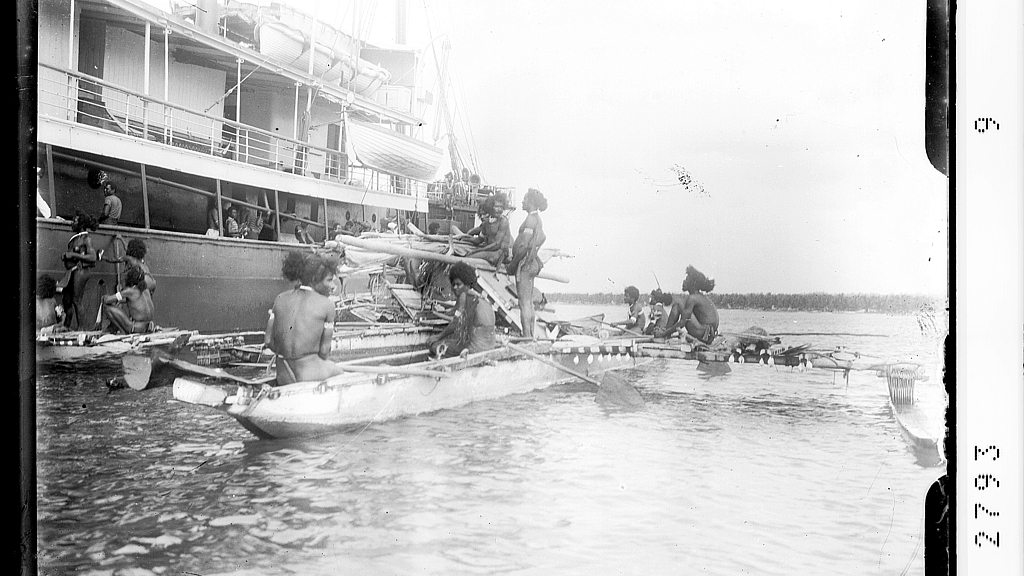North German Lloyd Colonial History Research Project
Basic and Contextual Research on North German Lloyd as a Big Player of German Colonialism: Maritime Infrastructures and Collector Networks
Together with the Übersee-Museum (Bremen) and the Südsee-Sammlung und Historisches Museum Obergünzburg, the German Maritime Museum is conducting basic and contextual research on the maritime aspects of colonial-era cultural property collecting in a project funded by the German Center for the Loss of Cultural Property. Using the example of one of the largest shipping companies of the German Empire, Norddeutscher Lloyd, the project focuses on the former German colonies in the South Seas as areas of origin of ethnological and natural history collection objects. The research not only sheds new light on the holdings of the participating houses, it should be of help to all institutions with objects from provenance contexts with maritime infrastructure. After all, things and people from overseas have always traveled by ship.
Between 1884 and the Versailles Treaties of 1919, Germany maintained colonies called protectorates in Africa and Oceania, as well as a quasi-colonial naval leasehold in East Asia. Cultural objects from the colonized societies of origin there were and are researched and exhibited in European museums. Where exactly did these things come from, under what circumstances were they appropriated? Provenance research is needed for these questions, which are often sensitive in a colonial context. Particularly in the so-called German South Seas, North German Lloyd was an important logistics partner for collectors in the transport of cultural property: the imperial mail steamer lines were among the infrastructural lifelines between the empire and the colony. And ultimately, in addition to explorers, military officers, colonial officials, traders, and missionaries, it was seamen such as the Allgäu-born Lloyd captain Karl Nauer (1874-1962) who conveyed objects to museum collections as part of collector networks.
The aim of the project is to re-evaluate the holdings of maritime and ethnological/anthropological collections within a common frame of reference in order to provide the foundations and contextual knowledge for a more meaningful assessment of the role of major shipping companies such as Norddeutscher Lloyd within current debates about colonial heritage in German museums. In addition to a scholarly publication, a corresponding, generally understandable and internationally accessible research guide for collection staff is planned.
The project is being carried out by Tobias Goebel and Lisa Hilli under the project management of Prof. Dr. Ruth Schilling. Tobias Goebel has been researching global and knowledge history topics as a research associate at the German Maritime Museum since 2015. Lisa Hilli is an International Fellow at the German Maritime Museum for the entire duration of the project. As a member of the Gunantuna (Tolai) community, the project not only fits into their research interests related to labor and trade relations as sites of transformation during the colonial period, but also provides the project team with an indispensable and collaborative entry into dialogue with one of the most important origin societies affected.
In addition to our project goals and the claim to reappraise the Maritime Empire according to current and socially relevant issues and in accordance with high scientific standards, the German Maritime Museum would like to provide transparent insights into ongoing research: Here you will find regular blog posts as workshop reports or thematic inputs from staff, cooperation partners and guest authors.

Ship PRINZ SIGISMUND (1903)
Photo: DSM Archiv

Ship PRINZ WALDEMAR (1893)
Photo: DSM Archiv





